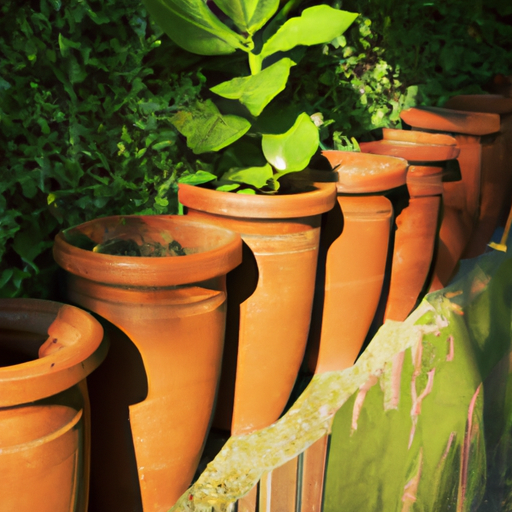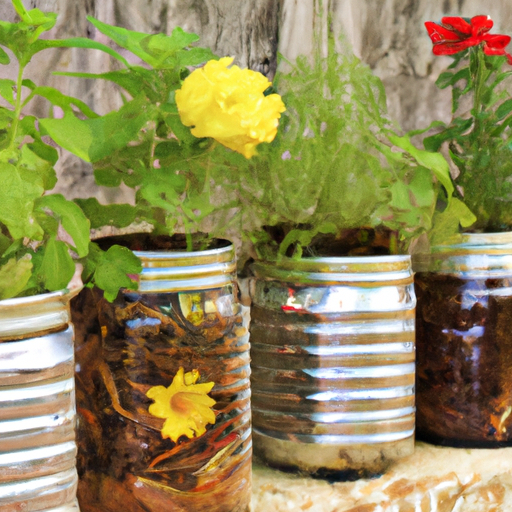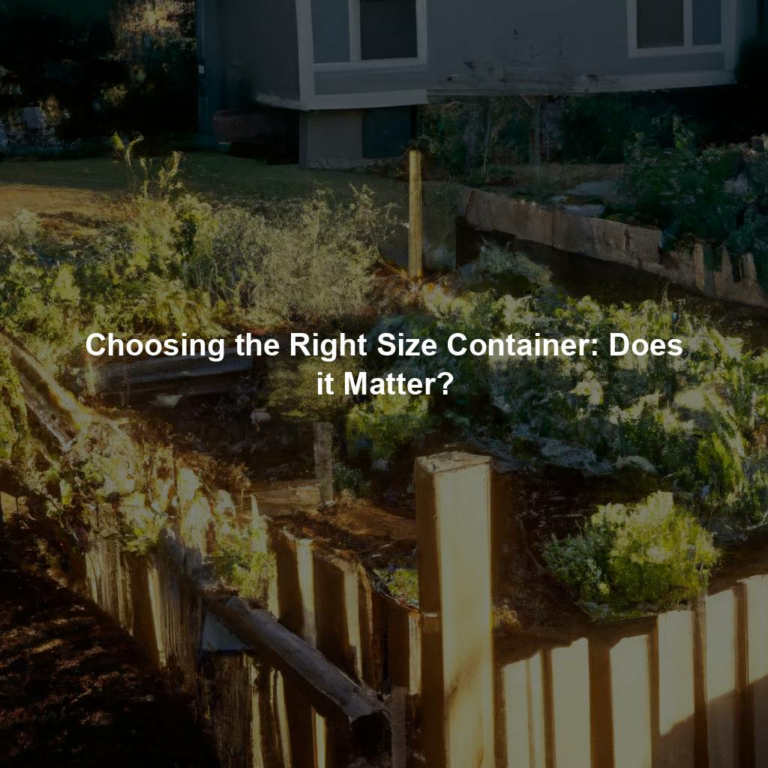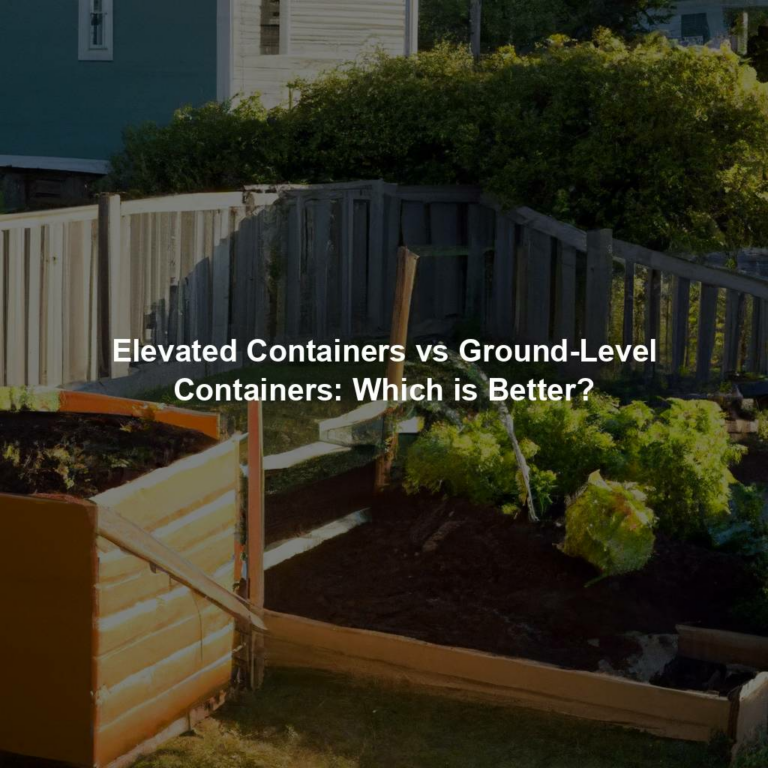Hey there, fellow garden enthusiasts!
As a Master Gardener, I’m always on the lookout for creative ways to spice up my outdoor space. And what better way to do so than by thinking outside of the box when it comes to containers?
Sure, traditional pots and planters are great, but why not switch things up with some unconventional container ideas? Not only will they add visual interest to your garden, but they can also be repurposed items that you already have lying around your home.
In this article, we’ll explore some unique and innovative container ideas that will take your gardening game to the next level. So let’s get started!
Repurposed Household Items As Planters
Repurposing household items as planters is not only a creative way to add some quirkiness to your garden but can also be an eco-friendly alternative to buying new containers.
Edible planters made from kitchen items such as colanders, teapots, and mason jars are perfect for those who want to grow their own herbs or small vegetables in a compact space.
Turning old toys into quirky planters like using an old wagon or bicycle basket adds a playful touch to any outdoor area.
As a Master Gardener, I highly recommend exploring unconventional container ideas since they not only provide functional benefits but also enhance the aesthetic appeal of your garden.
Vertical Gardening With Unconventional Containers
Now that we’ve explored some unconventional container ideas for your garden, let’s dive into the world of vertical gardening.
Wall-mounted options are a great way to maximize space while still adding a touch of greenery to your outdoor oasis. Consider using pallets or wooden planks mounted vertically and filled with soil and plants.
Another option is utilizing hanging gardens – these can be created with anything from repurposed gutters to old birdcages. The possibilities are endless when it comes to creating a unique and functional vertical garden in your backyard.
Remember to consider factors such as sunlight and irrigation when choosing which plants to include in your wall-mounted or hanging containers. With a bit of creativity and care, you can transform any blank wall or unused corner into a thriving green space.
Creative Use Of Old Tires And Wheels
As a Master Gardener, I highly recommend exploring DIY tire projects and transforming old wheels into unique planters for your garden.
Not only is this an eco-friendly way to repurpose materials that would otherwise end up in a landfill, but it also adds character and creativity to your outdoor space.
Start by cleaning the tires or wheels thoroughly and painting them with non-toxic paint if desired.
Then cut off any excess rubber from the tires and drill holes in the bottom for drainage.
Fill with potting soil and add your favorite plants such as succulents, herbs, or flowers.
Old bicycle wheels can be hung vertically on a wall or fence to create a stunning display of cascading greenery.
With some imagination and effort, you can turn something old into something new and beautiful for your garden.
Upcycling Wooden Crates And Pallets
Now that you’ve explored creative uses for old tires and wheels in your garden, let’s take a look at upcycling wooden crates and pallets.
Not only are these materials easy to find, they also provide endless possibilities for DIY projects and unique designs.
Wooden crates can be stacked or hung on walls to create vertical gardens, while pallets can be disassembled and repurposed as raised planters.
With just a little bit of creativity and some basic woodworking skills, you can transform these humble materials into functional and beautiful additions to your outdoor space.
So why not give it a try? The possibilities are endless!
Unusual Containers For Succulents And Cacti
Have you ever thought about planting your succulents and cacti in an unconventional container? If so, you’re in luck! There are plenty of unique options to choose from that will add a fun twist to your garden.
One idea is to create your own DIY cement planters. Not only will this save money, but it also allows for complete customization when it comes to size and shape.
Another option is to use unique glass containers for small plants such as teacups or lightbulbs. This not only adds visual interest but also makes for great conversation starters when guests come over.
When selecting a container, be sure to consider the drainage needs of your plants and adjust accordingly. With these unique ideas, your succulents and cacti are sure to stand out in any space.
Frequently Asked Questions
How Do I Choose The Right Soil For My Unconventional Container Garden?
When choosing the right soil for your container garden, it is important to consider a few factors.
Firstly, you need to choose the appropriate container size for your plants. This will help determine how much soil you’ll need and what type of soil preparation techniques should be used.
Secondly, make sure that you select high-quality potting mix which has good drainage capacity as well as organic matter content. The ideal potting mix usually contains peat moss, perlite or vermiculite, compost or other organic materials such as bark fines, coconut coir or rice hulls.
Additionally, adding slow-release fertilizers can provide essential nutrients to your plants throughout their growing season.
Lastly, ensure that you water regularly but avoid overwatering since this may lead to root rot or other fungal diseases in some cases.
With these tips in mind, you’ll be able to create an unconventional container garden with healthy and thriving plants!
Can I Use Any Type Of Household Item As A Planter, Or Are There Certain Materials To Avoid?
Wondering if you can use any type of household item as a planter? The answer is yes, with some creative alternatives and upcycling options!
As a Master Gardener, I encourage embracing unconventional container ideas to add personality and charm to your garden. However, it’s crucial to consider certain materials to avoid, such as those that may contain harmful chemicals or deteriorate quickly in outdoor conditions.
So, whether you’re repurposing an old boot or transforming a vintage teapot into a gorgeous planter, make sure you choose wisely and prioritize the health of your plants.
With these tips in mind, get ready to unleash your inner green thumb and experiment with unique containers for a one-of-a-kind garden oasis.
What Are Some Tips For Ensuring Proper Drainage In Vertical Gardens Made From Unconventional Containers?
When it comes to vertical garden design, using unconventional containers can provide a unique and creative touch. However, proper drainage must be considered in order to ensure the health of your plants.
One tip for ensuring adequate drainage is to drill holes into the bottom of your container before adding soil and plants. Additionally, layering materials such as gravel or small rocks at the base of your container can also help with drainage.
By incorporating these techniques, you can elevate your gardening game and create a stunning vertical garden display that will impress all who see it!
Is It Safe To Use Old Tires And Wheels As Planters, Or Are There Environmental Concerns To Consider?
When it comes to finding creative alternatives for planters, old tires and wheels may seem like a great option. However, before using them in your garden, it’s important to consider their environmental impact.
While they can add a unique touch to your outdoor space, they also have the potential to release harmful chemicals into the soil over time.
As a Master Gardener, I always recommend considering more eco-friendly options that won’t compromise the health of your plants or the environment.
Remember: there are plenty of unconventional container ideas out there that don’t come with such risks!
How Should I Prepare Wooden Crates And Pallets Before Using Them As Planters, To Ensure They Last As Long As Possible?
When using wooden crates and pallets as planters, it’s important to properly prepare them so they last as long as possible. Sealing the wood is essential in preventing water damage and rotting.
Before sealing, make sure the wood is clean and free of any debris or loose splinters.
Once sealed, you can choose from a variety of alternative finishes such as paint or stain to add some personality to your garden space.
Just remember to use non-toxic options if you plan on growing edible plants in these containers.
Happy gardening!
Conclusion
Well, my fellow garden enthusiasts, it seems we have come to the end of our unconventional container journey. But fear not! The possibilities for unique planters are endless and I hope this article has inspired you to think outside the box…or should I say planter?
Remember, when choosing your soil, always consider the specific needs of your plants.
And as for using household items as planters, let your creativity run wild but be cautious of materials that may harm your plants or the environment. Proper drainage is key in vertical gardens made from unconventional containers and old tires and wheels can make interesting additions to any garden with proper precautions taken.
And lastly, wooden crates and pallets can be great options for creating rustic-looking planters but take care in preparing them properly to ensure their longevity.
So go forth and experiment with all sorts of unconventional containers – who knows what beautiful creations you’ll grow! Happy gardening!





